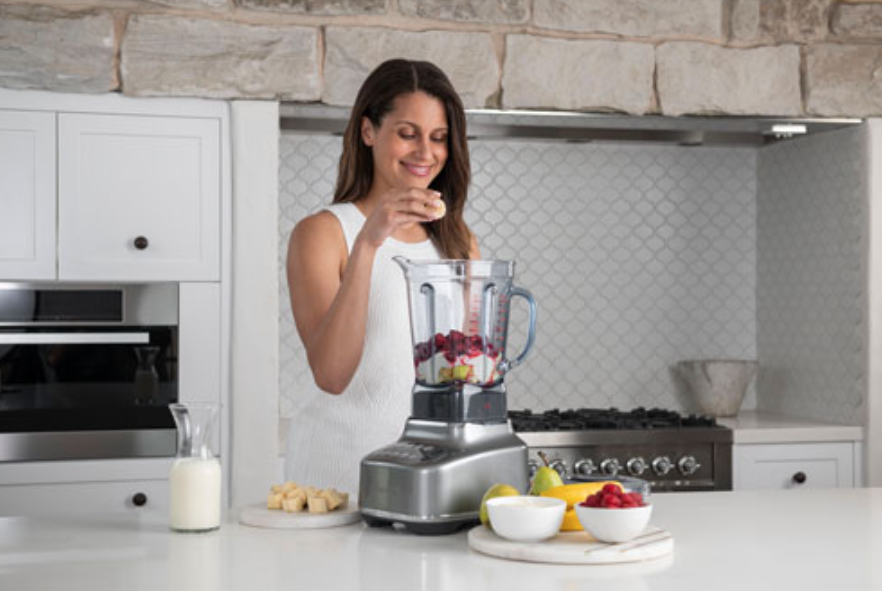
So you’re thinking about eating or drinking healthier and want to look into ways to get more vitamins and minerals through fresh fruits and vegetables. Both blenders and juicers can come in handy. But while they accomplish similar tasks, they do so in very different ways and with very different results.
Table of contents
- Difference between blenders and juicers
- Types of blenders and features
- Types of juicers and features
- Things to consider before buying blenders and juicers
What is the difference between blenders and juicers?

A blender uses blades to mix various ingredients, including both hard and soft fruits and vegetables, ice, liquids, butter, and, depending on the model, even nuts and seeds. They use a rapid speed to blend everything quickly, making them ideal for drinks like smoothies as well as food like soups and sauces. You can mix ingredients like fruit juice, spinach, carrots, and frozen berries, for example, for a yummy energy boost. Or ice, bananas, almond milk, and nut butter for a delicious dessert drink.
By contrast, a juicer extracts only the liquid juice from what you put into it, including hard and soft fruits and vegetables. The pulp is pulled out separately at which point you can discard it. And you’re left with just liquid juice. With many juicers, you can even leave the skin and seeds intact on fruits like apples and it will pull them out so you’re left with just pure, delicious juice. Try combinations like apples, carrots, and spinach or orange, ginger, and kale.
What types of blenders are available?
Aside from commercial-grade blenders for restaurants and professional chefs, there are several other types of blenders.
 Personal blenders
Personal blenders
Becoming more and more popular due to their convenience and ease of cleaning, personal blenders come with a detachable cup and lid that you can add ingredients directly into and take with you on the go. Put the lid on and it attaches directly to the blender blades. Mix, unscrew the lid, and replace it with a to-go lid or drink right away.
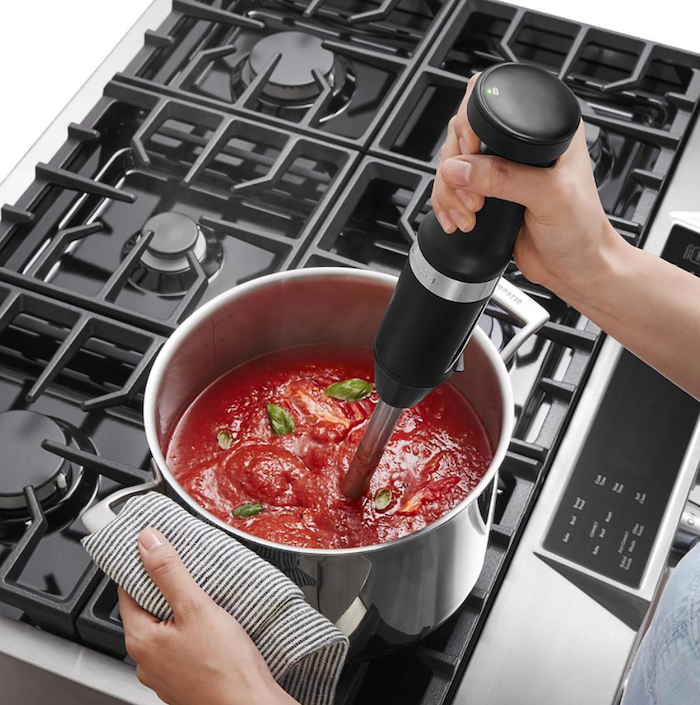 Immersion blender
Immersion blender
Also known as hand blenders, these are tall mixers with a long shaft and blades at the end. Many come with a blending cup so you can pop the ingredients inside with some liquid, put the immersion blender in the cup, and mix at one of two (or more) speeds. Some are also wireless so you can easily move around and save plugs while multitasking and making a big meal or whipping up some desserts.
Countertop blender
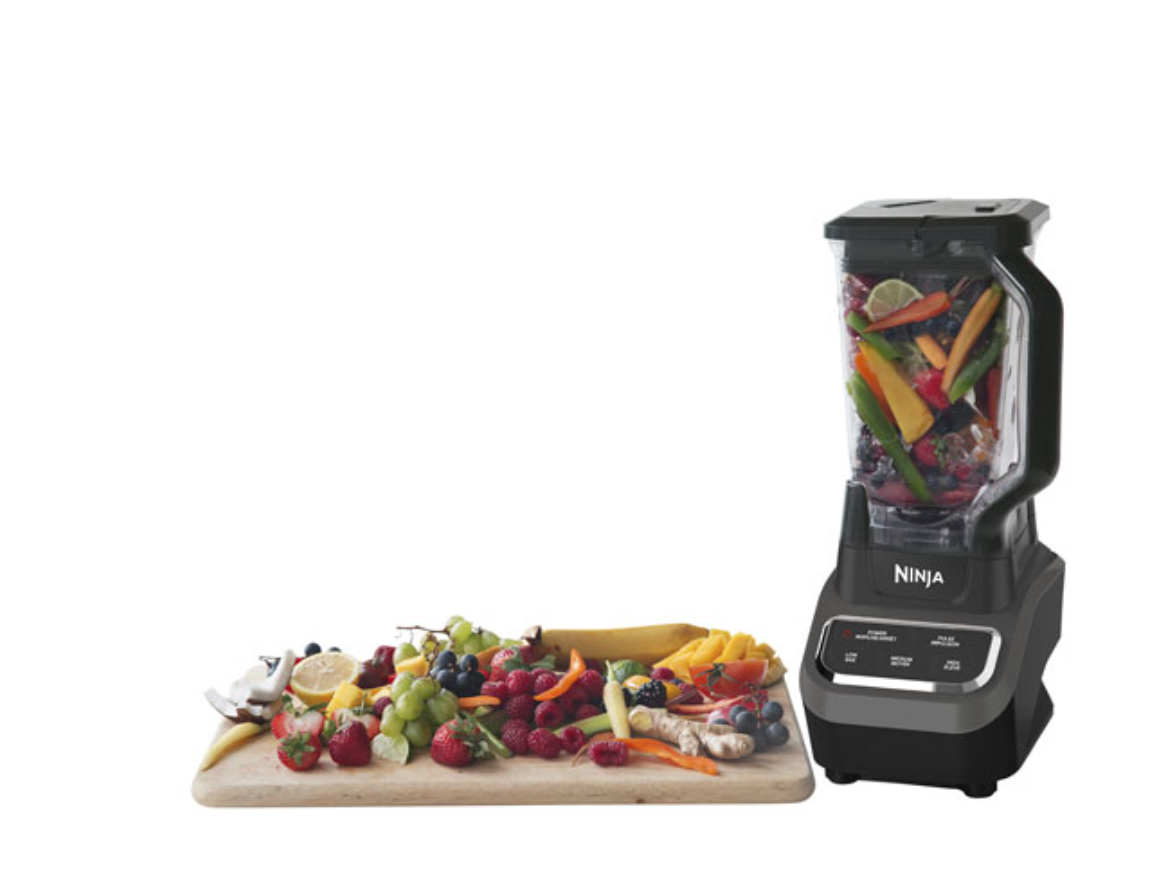
As the name implies, a countertop or full-size blender sits on your counter and includes a base and a large jar for blending large (or small) amounts of ingredients. Place the ingredients inside and powerful blades at the bottom blend them as needed. They usually have knobs and/or touch controls for selecting the speed or level, or specific blend setting. Some countertop blenders can also heat food you put inside so you can instantly make things like homemade soup or warm dips.
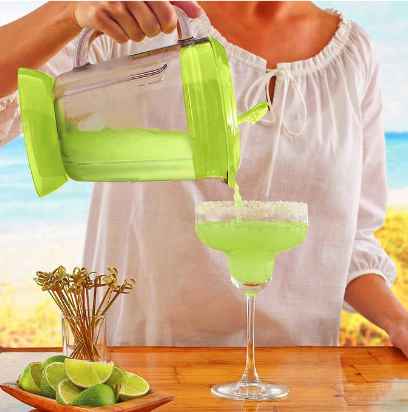 Frozen drink maker
Frozen drink maker
Sometimes referred to as a “margarita maker,” frozen drink makers can actually make much more, from slushie drinks to your own homemade soda indulgences. They handle simpler liquid-based drink types, making 2-3 drinks at a time. Add the ingredients, push a button or turn a knob to mix, then pour and serve. Some even come with a pouring system that lets you place a glass below and pour the drink right into it, making them perfect for parties and entertaining.
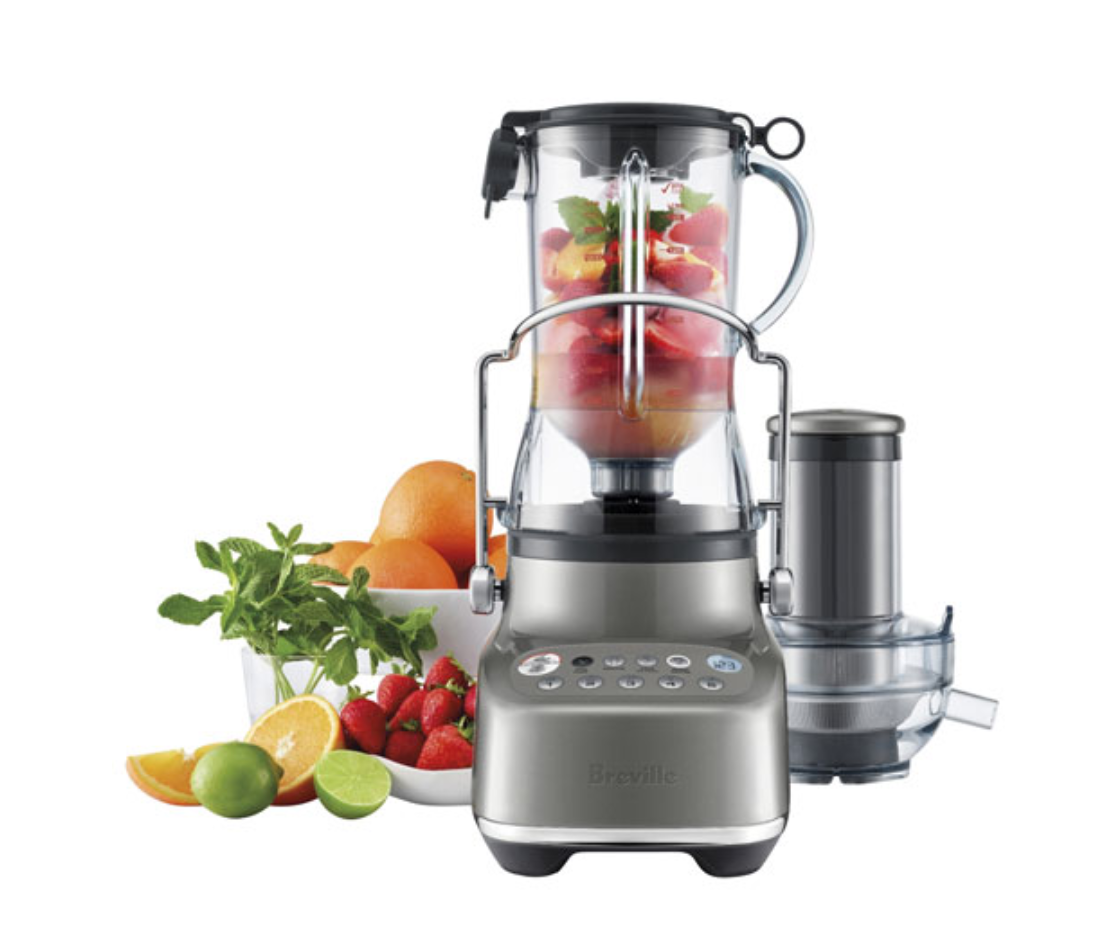 Bluicers
Bluicers
A relatively new category, bluicers is a term coined by Breville to describe its dual-function machines. These, as the name implies, can work as both blenders and juicers, blending fruits, vegetables, ice, and liquid to make smoothies while also pressing fruits and vegetables when you simply want fresh juice. Check out our detailed review of the two bluicer models to learn more about how they work.
Blender features to consider
What other accessories you might need
With some blenders, like personal ones, you might need other blender accessories like an extra cup or storage lids. Some immersion blenders can work with other attachments, like whips, as well, making them pretty versatile.
How easy is clean-up?
Clean-up is simple with most blenders by hand-washing the cups and/or jugs or even putting them into the top rack of a dishwasher. With immersion blenders, you can easily remove the blades for cleaning. Clean-up is a bit more difficult with countertop blenders since you need to carefully either remove and clean the blades or use a brush and push down to the bottom to clean them (make sure not to cut yourself!) and rinse and clean out the jar, getting any debris from within the blade area. Some full-sized blenders, however, have self-cleaning modes. Frozen drink makers are fun for entertaining, but keep in mind that you will have to clean the spout and any messes made during the pouring process.
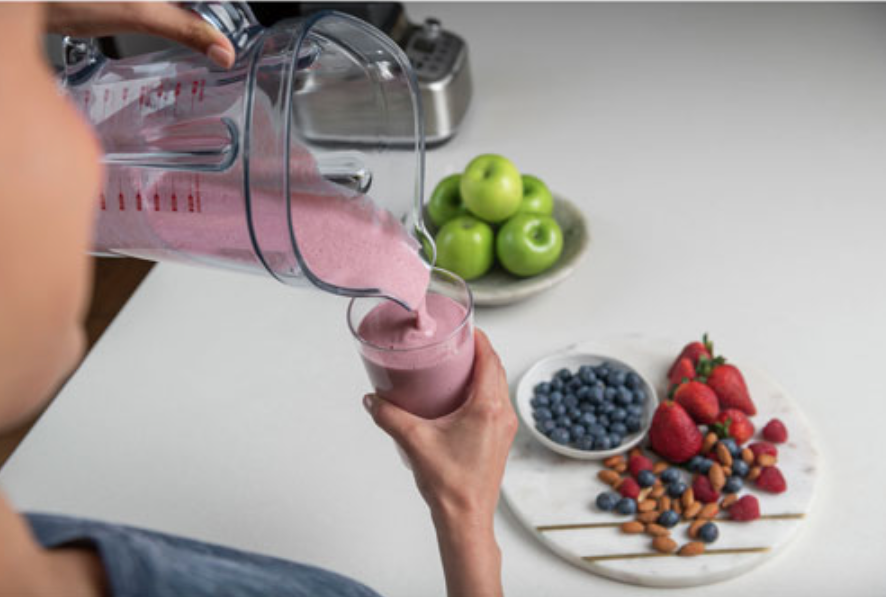
How much space do you have?
If you want to save countertop space in a small home or apartment, you might prefer a personal blender. Immersion and hand blenders can often be tucked away in a cupboard until you need them. Full-sized blenders can be stored away, too, if you have the room. But if you plan to use it daily, you’ll want to make sure you have a dedicated spot for it on the countertop.
What do you want to make?
If you want to make more than smoothies, a full-size or immersion blender might be ideal. Both are good for mixing big batches of things like soups and sauces. With an immersion blender, you can place it directly into a pot of soup ingredients, for example, and blend without having to transfer it to another container or separate full-sized blender, which is an advantage when it comes to clean-up, too. If you have tough blending jobs, like harder fruits and vegetables, or ice, consider a full-size blender that has powerful blades and different speed levels and modes. The number of watts needs to be considered based on the desired ingredients. You can get blenders that are anywhere from 600 watts up to 1,500, so if you plan to blend harder ingredients, you’ll want something with the most power. And if you want to use the blender to blend other things beyond smoothies, you’ll want one with different levels, speeds, and even specific settings, for maximum effectiveness.
Conversely, if you’re just looking to make mixed drinks to serve at a party, like alcoholic beverages and frappes, a less powerful frozen drink maker might suffice, and it’s fun to use!
What types of juicers are available?
While it might seem like all juicers are the same, there are actually very different models that work in very different ways.
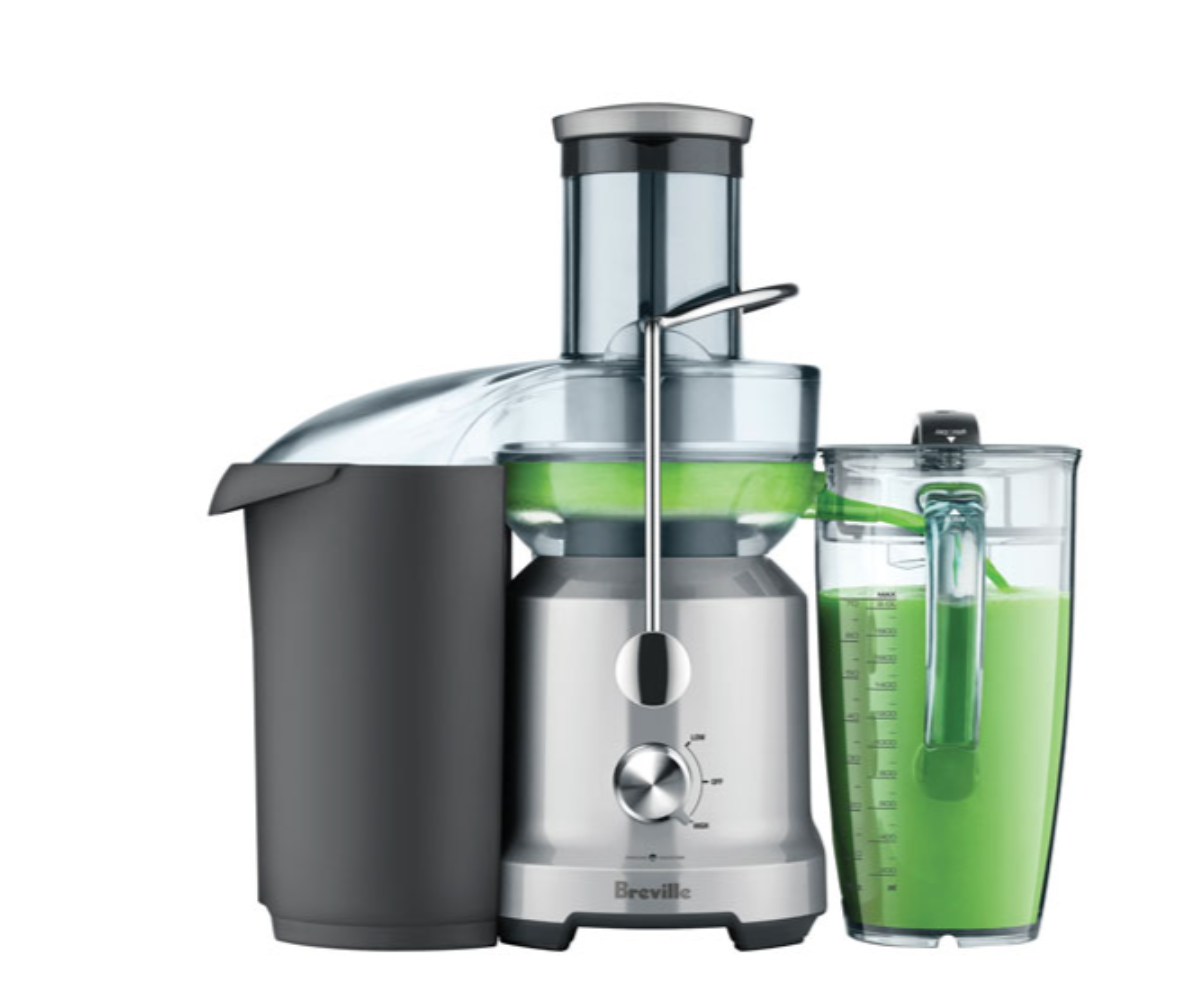 Centrifugal juicers
Centrifugal juicers
As the most popular, and typically most affordable, type of juicer, centrifugal juicers extract the juice from fruits and vegetables using a spinning metal blade that presses the ingredients against a strainer, spinning at a speed of about 12,000 RPM (depending on the model). As it does this, the juice drains into a container while the pulp is pulled into a separate compartment.
 Masticating juicers
Masticating juicers
Unlike centrifugal juicers that use rapidly spinning blades, a masticating juicer uses a slow auger (i.e. gear) to press and crush the ingredients at a speed of about 80-100 RPM, which then slowly removes the juice.
Juice press
The most efficient type of juicer is a juice press, which uses a hydraulic or pneumatic system to complete the juicing process in two stages. First, the fruits and vegetables are ground to a pulp. Then, the juice is slowly extracted by pressing that pulp under thousands of pounds of pressure. While you might hear of other juicers being referred to as “cold press” juicers, juice presses are technically the only real cold press juicers around.
 Citrus juicer
Citrus juicer
The simplest type of a juicer is a citrus juicer, which ranges from a juice reamer with a cone-shaped head and gear-like protrusions you can press a halved fruit onto to extract the juice, to juice squeezers, presses, and funnels. In most cases, these require a manual process of shredding the flesh from the item to get the juice, though there are some electric models. These are ideal for lemons, limes, oranges, and tomatoes, but not much else.
Juicer features to consider
Is getting the maximum health benefits a priority?
If you’re looking for maximum health benefits, a masticating juicer might be the best option. The heat generated by the blades of a centrifugal juicer can destroy some of the nutrients. But you’ll be able to extract the most nutrients using a juice press. In any event, however, you will get great nutrients with any type of juicer using fresh fruits and vegetables.
How much room do you have?
Masticating juicers and juice presses are larger and thus tend to take up more counter space, which is why the latter is more often found in professional kitchens or with professional cooks. Both are also generally more expensive. But those who are serious about juicing and want to get the maximum amount of nutrients out of their juicing efforts might want to opt for one of these, regardless. If space is of the utmost concern, though, go with a centrifugal juicer.
What is required for clean-up?
Centrifugal juicers can be a chore to clean since you need to remove and clean all parts, including discarding the pulp. You also get more oxidation that results in foam on top of the juice. All juicers will take time to clean, though some have parts that can be washed in the top rack of the dishwasher.

What ingredients do you want to use?
Centrifugal, masticating, and juice presses are all great for making juice from a variety of fruits and vegetables, both hard and soft. But centrifugal juicers aren’t the ideal option if you want to add nuts and seeds to your juice. Masticating juicers are better for juicing greens and the result will include less oxidation and thus less foam at the top of your juice. If you want to make the occasional glass of homemade lemonade or like to spend Sunday mornings with the kids making a few glasses of freshly squeezed OJ to go with breakfast, a citrus juicer might be all you need. (But note that you’ll require a lot of fruits in order to make a full glass since you can’t typically squeeze as much juice out of an orange manually as a machine can.)
How long do you want to keep the juice?
Juice made with a centrifugal juicer will start separating quickly so they’re best to use to make juice you will drink right away. For first-time buyers who want to get a feel for juicing, and plan to make juice from basic fruits and vegetables and drink it right away, these are a great option. But if you want to make larger batches to store in the fridge for a few days, up to a week, opt for a masticating juicer or juice press instead. Juice from a juice press has a shelf life of 3-5 days in the refrigerator with very little separation or breakdown of the nutrients, nor impact on taste. There will also be minimal foam, oxidation, and pulp. And you will get the highest yield of nutrients from ingredients like leafy greens.
How important is saving time on prep work?
It will take longer to get a fresh cup of juice from a masticating juicer, and they require more prep work since the chute is smaller so you need to cut the fruits and vegetables into smaller pieces to feed into them. But it’s also a more efficient process which means you’ll retain all or more of the nutrients than might typically be the case with a centrifugal juicer. But if you want something you can quickly chop veggies and fruits up and throw into to get a quick glass, a centrifugal juicer might be better for you.
Do you want to make other things, too?
Masticating juicers can function as a grain mill for making nut butter or baby food, and process frozen foods as well as make juice. Juice presses, meanwhile, can be used to make dairy-free milk-like beverages as well from nuts, seeds, oats, and soy, as well as nut oils.
How much will you be making?
If it’s just for you, or if everyone in the household will be making their own custom smoothies at different times, a single-serve blender might be all you need. Most of them, as noted, come with two cups. But if you are making big batches of smoothies, or want to make other recipes, a full-sized blender would be ideal.
What should you consider before buying blenders and juicers?
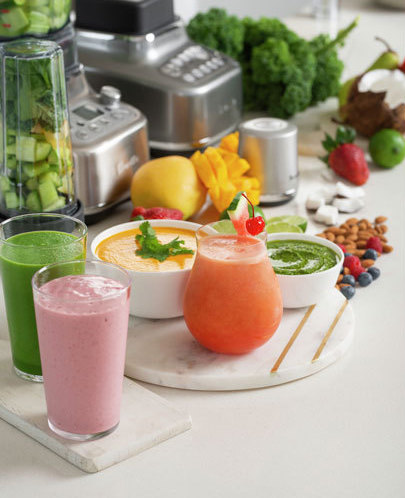
Here are some things to keep in mind and questions to ask yourself before buying blenders and juicers.
What do you want to make?
If you gravitate more towards smoothies than juices, a blender would be the best option. It would also make the most sense if you want to be able to use it for other recipes as well, like mashed potatoes, soup, dips, purees, and even baby food.
But if you’re looking for the best way to get the absolute most vitamins and nutrients out of fresh fruits and vegetables, a juicer is the way to go. Keep in mind, however, that if you’re looking to increase your fibre intake, the fibre will be removed from the produce. So unless you will use the extracted pulp in other recipes, juice from a juicer won’t necessarily help keep you regular.
What’s your budget?
If you’re on a budget and new to blending or juicing, opt for an entry-level or smaller version of either appliance until you get a feel for how it works and can determine limitations. If you’re looking to mainly use softer fruits and vegetables as well as liquids, a blender that doesn’t have a super high RPM or that is designed for single or smaller quantities, might suffice. And you can save money opting for a centrifugal juicer if you’re just trying out juicing before delving in with a more expensive model.
How easy is clean-up and prep?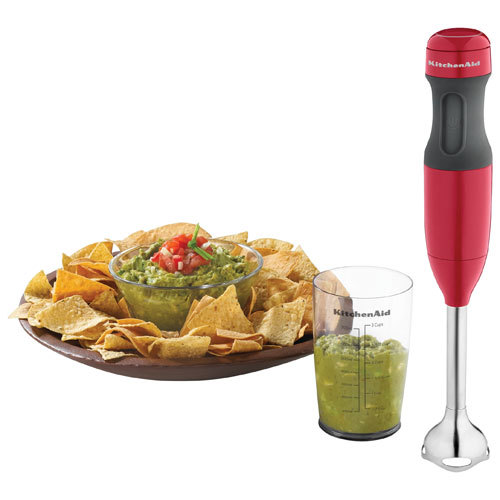
Juicers take little effort to get a fresh glass to drink with your meal or in the morning or at night, but clean-up can be a drag. Cleaning out the pulp takes time as does cleaning the pieces and parts. In most cases, the jugs are simple to clean with soap and water. A blender is usually pretty easy to clean, though you need to be very careful with the blades.
Noise level
Some juicers and blenders are louder than others: centrifugal juicers, for example, tend to be louder and blenders with higher RPM might be louder, too. So if you’re looking to make a fresh smoothie or juice in the morning or late at night while others are sleeping, one that’s very loud and powerful might not be the best choice.
Does it look good on your counter?
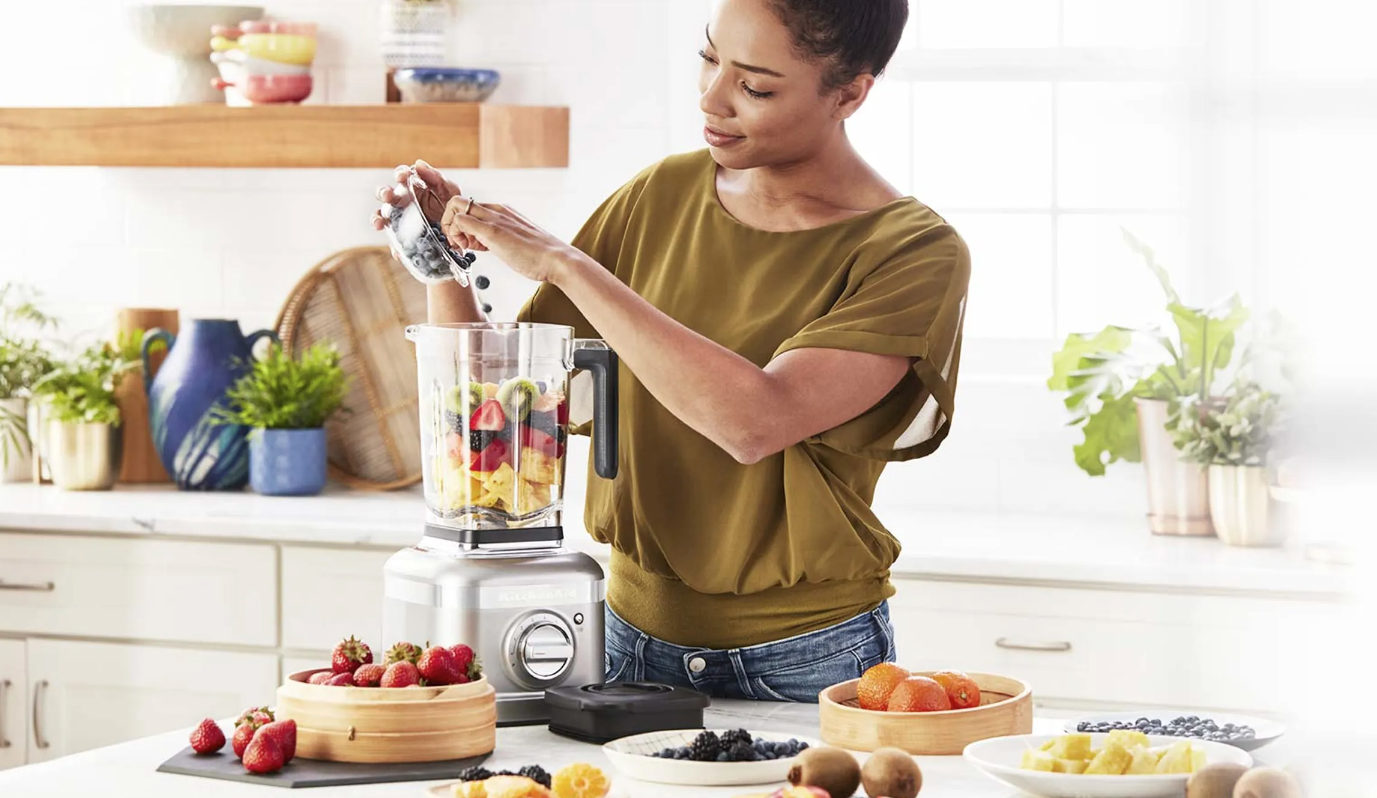
If the blender or juicer will make a home on your kitchen countertop, you want it to look good and match the décor. Find one in a colour, size, and shape that fits best with where you want to put it. You’ll also need room to store extra jars, blades, or other accessories, too.
Ideally, you’d have both; a blender and a juicer in your kitchen since they really do perform very different functions and output very different products, whether it’s a smoothie, freshly made juice, oils, nut butter, sauce, soup, and more. With both blenders and juicers, you’ll be able to combine fresh ingredients to drink (or eat!) and make recipes that are totally delicious.
Take the next step
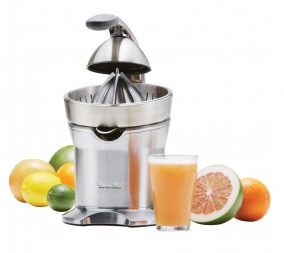
Now that you’re armed with all of this information, you’re ready to take the next step and pick from the different types of blenders and juicers, finding the one that best suits your needs.






